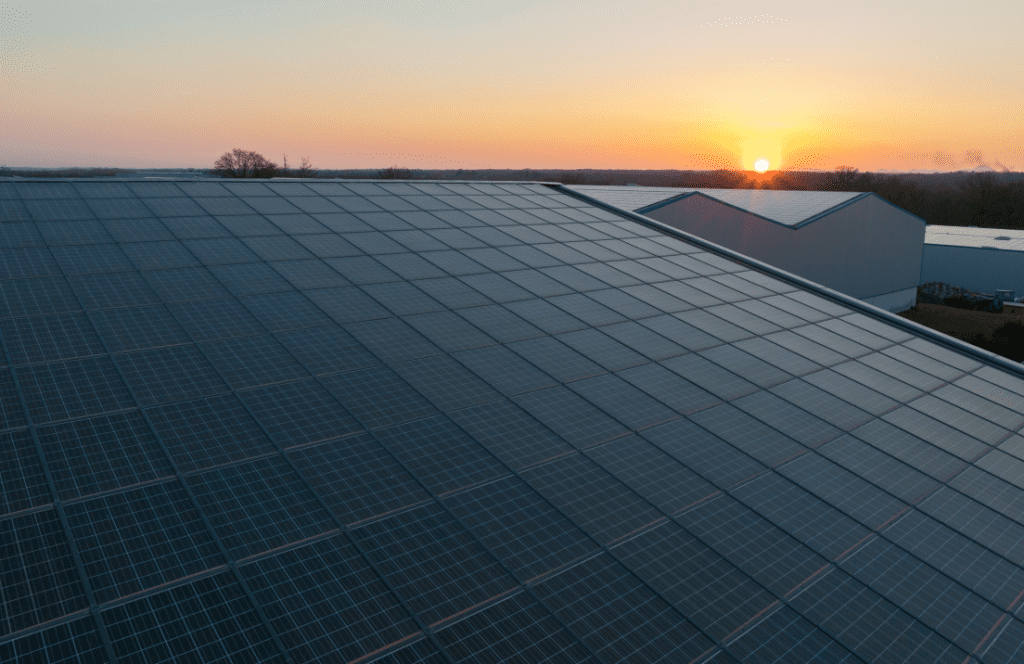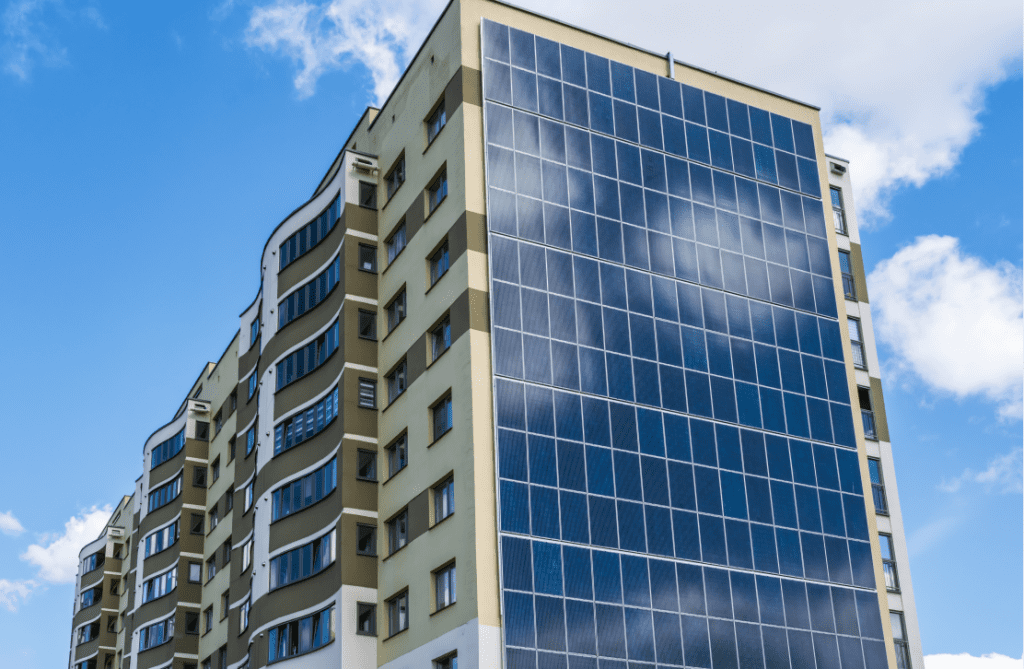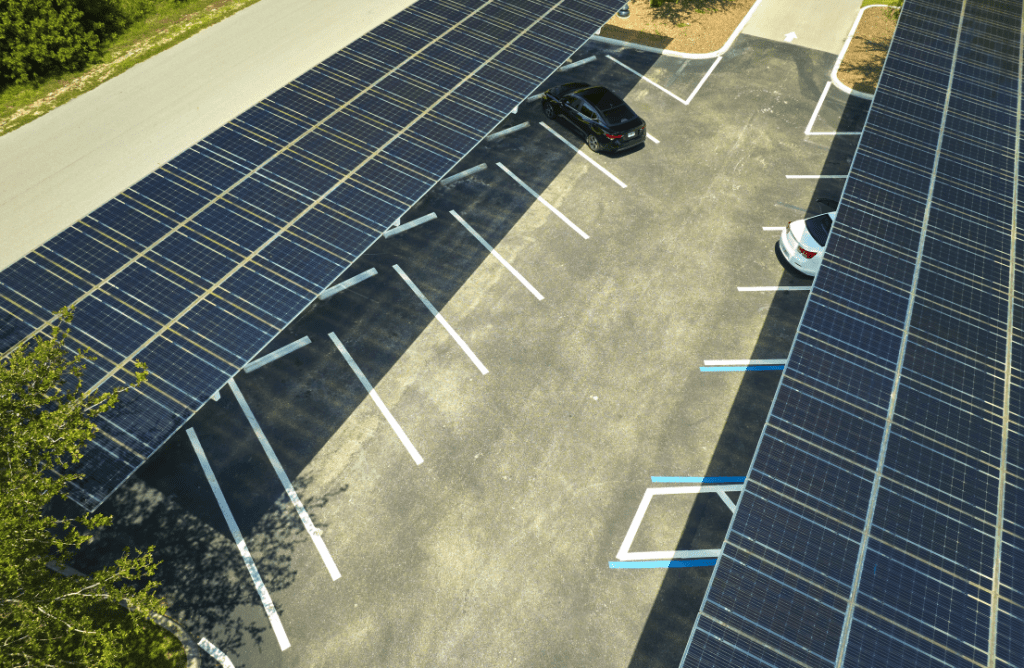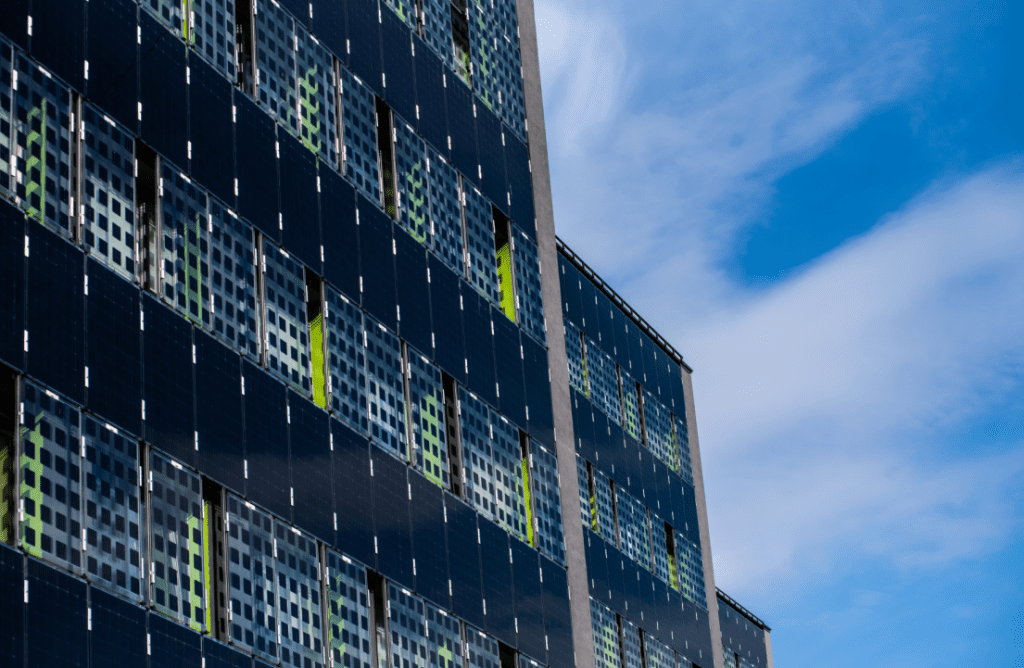Gebäudeintegrierte Fotovoltaik: Das A bis Z von BIPV-Systemen
Was sind BIPV-Systeme?
Table of Contents
Das Baugewerbe trägt stark zum Klimawandel bei, denn 38 % der weltweiten Kohlenstoffemissionen entfallen allein auf den Bausektor.
Da die durch das Baugewerbe verursachten CO2-Emissionen im Jahr 2021 mit rund 10 Gigatonnen – ein Anstieg von 5 % gegenüber 2020 – einen historischen Höchststand erreicht haben, liegt es auf der Hand, dass die Bauindustrie umweltfreundlichere Verfahren implementieren muss, um den Klimawandel zu bekämpfen und gleichzeitig mit der Nachfrage einer wachsenden Bevölkerung Schritt zu halten.
Bei diesem Vorhaben kann die gebäudeintegrierte Fotovoltaik (BIPV) eine willkommene Hilfe sein. Bei BIPV-Systemen handelt es sich um Fotovoltaikanlagen, die als herkömmliche funktionelle Teile von Gebäuden genutzt werden können und gleichzeitig Sonnenenergie in Strom umwandeln.
BIPV-Systeme können traditionelle Bauelemente wie Dächer, Fassaden und Oberlichter ersetzen – eine faszinierende Entwicklung, um die Fotovoltaik nahtlos in moderne architektonische Gebäude zu integrieren.
BIPV-Systeme wurden bereits in eine Vielzahl von Gebäuden auf der ganzen Welt integriert. Zu den bekannteren Gebäuden zählen u. a. die architektonisch anspruchsvolle Copenhagen International School in Dänemark – deren 700-kW-BIPV-Systeme 50 % des jährlichen Gesamtstromverbrauchs der Schule decken – und das beeindruckende Solar Ark-Gebäude in Japan. Die BIPV-Systeme der Solar Ark erzeugen 630 kW aus über 5000 Solarmodulen, woraus sich ein Gesamtstromertrag von rund 500.000 kWh pro Jahr ergibt.
Der Anstieg des weltweiten BIPV-Markts auf einen Wert von etwa 10,8 Mrd. US-Dollar im Jahr 2022 und die stets größer werdende Anzahl an Menschen, die sich in Bezug auf die Energieerzeugung für umweltfreundliche Lösungen entscheiden, sind ein zuverlässiger Indikator dafür, dass BIPV-Systeme auf Dauer einen wichtigen Platz einnehmen werden.
In diesem Artikel erörtern wir die Unterschiede zwischen BIPV-Systemen und herkömmlichen PV-Anlagen, die verschiedenen Arten von BIPV-Systemen, die Vorteile von BIPV-Systemen und einige konkrete Beispiele von BIPV-Systemen an verschiedenen Orten der Welt.

Welche Unterschiede gibt es zwischen BIPV-Systemen und herkömmlichen PV-Anlagen?
Zunächst ist es wichtig, die Unterschiede zwischen herkömmlichen Fotovoltaikanlagen – auch als „BAPV“ oder „gebäudegebundene Fotovoltaikanlagen“ bezeichnet – und BIPV-Systemen zu klären.
Ein wesentlicher Unterschied besteht darin, dass bei BIPV-Systemen die PV-Module Teil der Architektur des Gebäudes sind und in die Konstruktion integriert werden. Da BIPV-Systeme einen strukturellen Teil des Gebäudes bilden, benötigen sie im Gegensatz zu herkömmlichen PV-Systemen weder Gestelle noch Montagevorrichtungen.
Normale BAPV-Systeme hingegen sind lediglich mit dem Gebäude verbunden und können daher bei Bedarf wieder entfernt und ersetzt werden. Während BIPV-Systeme bereits in der architektonischen Phase des Bauvorhabens geplant werden müssen, können BAPV-Systeme problemlos zu einem späteren Zeitpunkt im Bauprozess nachgerüstet werden.
Ein weiterer Unterschied zwischen BIPV und BAPV besteht darin, dass bei BIPV-Systemen die PV-Module neben ihrer Hauptaufgabe, das Gebäude mit Strom zu versorgen, auch praktische Gebäudefunktionen erfüllen (z. B. Isolierung oder Schutz).
Im Gegensatz zu BAPV-Projekten, bei denen die Solarmodule meist auf Dächern installiert werden, stehen bei BIPV-Projekten weitaus mehr potenzielle Freiflächen zur Verfügung. Sie können zur Erzeugung Ihres Solarstroms z. B. die Fassade des Gebäudes nutzen, die durch das Absorbieren der Sonnenstrahlen auch die Temperatur im Inneren des Gebäudes senkt.
Normale BAPV-Systeme hingegen dienen lediglich der Erzeugung von Strom aus Sonnenenergie für das Gebäude und haben darüber hinaus keine weitere Funktion.
Architekten sollten bei der Entscheidung zwischen BIPV und BAPV stets berücksichtigen, wie diese PV-Technologien auf die individuellen Anforderungen der Bewohner des Gebäudes zugeschnitten werden können.
So können BIPV-Systeme neben der Stromerzeugung zusätzliche Vorteile bieten, wie z. B. die Integration von halbtransparenten Dünnschicht-PV-Anlagen für eine natürliche Tageslichtbeleuchtung oder Solarthermieanlagen zur Gewinnung von Wärmeenergie, die sich für die Warmwasserversorgung oder die Raumheizung und -kühlung nutzen lässt.

What are the advantages of BIPV?
Energy efficiency
By collecting solar energy to generate electricity, BIPV systems mean that the building relies on fewer energy resources for power. As the sun’s energy is a completely renewable resource, this then reduces reliance on traditional, finite sources like gas or coal.
Aesthetics
Unlike traditional BAPV solar panels, BIPV are integrated into the design of the building. This allows architects to integrate PV modules as an intrinsic part of the building’s visual identity, with the BIPV system combining form and function.
This is usually favored by architects, who often feel that the “add-on” nature of regular BAPV solar panels and their associated fitted brackets and mounts detracts from the building’s looks.
As part of the building’s integral structure, BIPV modules are also customizable in size, color, and shape to better fit in with the overall design. This allows them to be integrated into any structure, from houses to skyscrapers.
Reduced operational costs
BIPV aren’t just about greener energy – they’re also considered a wise financial move. By shrinking energy bills, this significantly reduces the operational costs of BIPV systems.
These reduced material and electricity costs also mean the building sees a better return on investment, making BIPV systems a good choice for long-term financial and environmental sustainability.
Reliability
Once installed, BIPV systems are more reliable and require minimal maintenance.
In the long run, this means buildings can rely on stable energy generation without the need for regular upkeep and maintenance, further reducing their outgoing costs.
Space-saving design
As BIPV systems can be integrated into the outer walls, windows, or roof of a building, this means no additional space is taken up by bulky mounts or brackets.
By choosing a solution that’s space-conscious from early on in the building’s design process, architects and construction companies can ensure that BIPV systems optimize every inch of space for more efficient energy capture and power generation.
Before undertaking any BIPV projects, just make sure you consult local operators to ensure your project complies with laws and regulations.
Less pollution
By generating clean energy without emitting any pollutants or greenhouse gases, BIPV systems are a great way to massively reduce a building’s carbon footprint.
In addition, particularly in hot countries that experience a lot of sunlight, there is another added benefit of using BIPV systems: By using BIPV to provide shade and insulation for a building, this can also help to reduce a building’s overall energy consumption.
Shading windows with BIPV systems, for example, can help to reduce the amount of heat that enters the building. This in turn minimizes the use of air conditioning and other energy-hungry cooling systems, thus reducing energy consumption and associated carbon emissions.

Hoymiles microinverters at play in BIPV systems
To get the best results from BIPV systems, it’s especially important to incorporate BIPV into the initial building design, swapping out traditional materials like roofing shingles for PV components like PV shingles, for instance.
By working BIPV into the architectural design from the get-go, this reduces the additional expense of any late additions of BAPV systems, which may not fit along with the building’s design, along with the hassle of installing separate mounting systems.
Furthermore, in BIPV projects, the larger surface area of the PV modules means it is more likely that some of the solar panels will be in the shade at certain times of the day or between different seasons. So to compensate for this, Hoymiles microinverters enable each PV module to operate independently. This ensures that modules in the shade don’t compromise the generating power of other modules in the system.
But when it comes to the inner workings of BIPV, there’s a problem. Unlike regular solar projects, BIPV don’t have an existing structure – like a roof, for example – to rely on. Any additional weight could cause damage to the BIPV system, or render it too heavy to fit to buildings safely, so any potential addition needs to be evaluated.
And it also means the inverters used in these projects need to be light.
At Hoymiles, we provide microinverters with BIPV projects in mind, so they are compact and light enough to suit any BIPV system.
In China, one railway station used Hoymiles microinverters in its BIPV roofing panels to make sure it could harness clean solar energy without adding any unnecessary load to the structure.
And in Finland, Hoymiles microinverters were used in BIPV roofing tiles for a lakeside cabin, to make the most of the summer sun while keeping the structure light and efficient.

Conclusion
In a world grappling with climate change and a construction sector contributing 38% of global carbon emissions, BIPV have emerged as a transformative solution.
By merging form and function to harness solar energy and generate electricity while seamlessly integrating into architecture, BIPV helps to reduce reliance on other energy sources, offer aesthetic flexibility, and reduce operational costs.
Most importantly, BIPV significantly reduces pollution by generating clean energy. With a burgeoning global BIPV market valued at around $10.8 billion in 2022, it’s clear that BIPV are quickly becoming a key choice for green power technology in the construction landscape.
